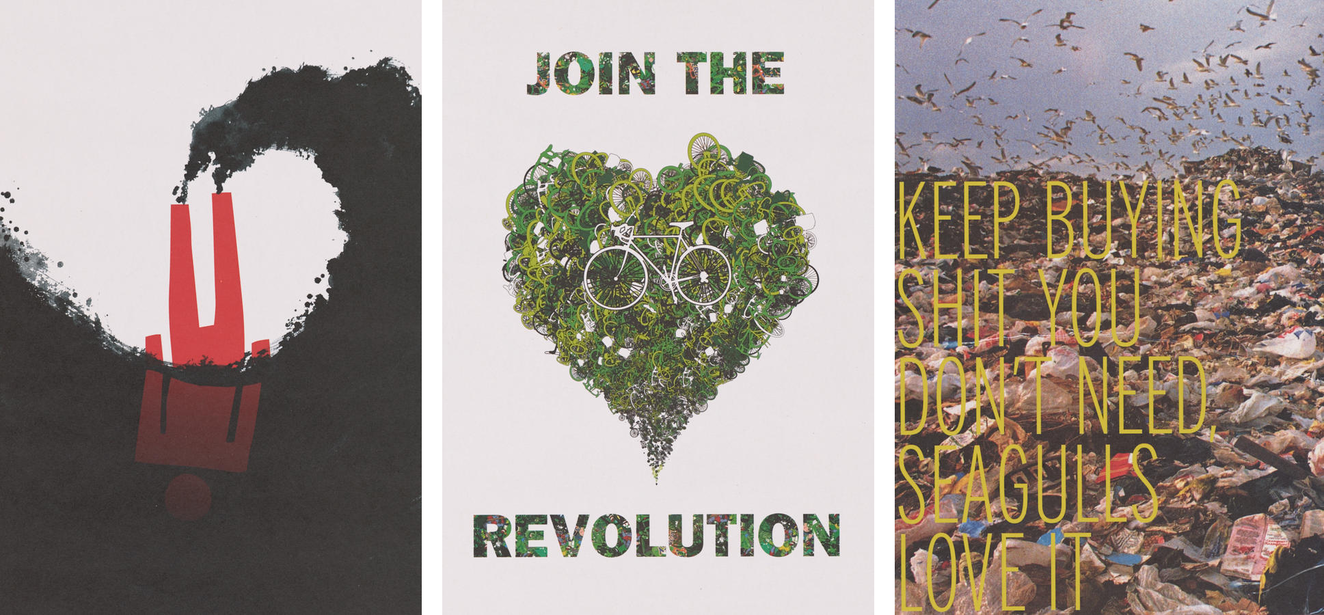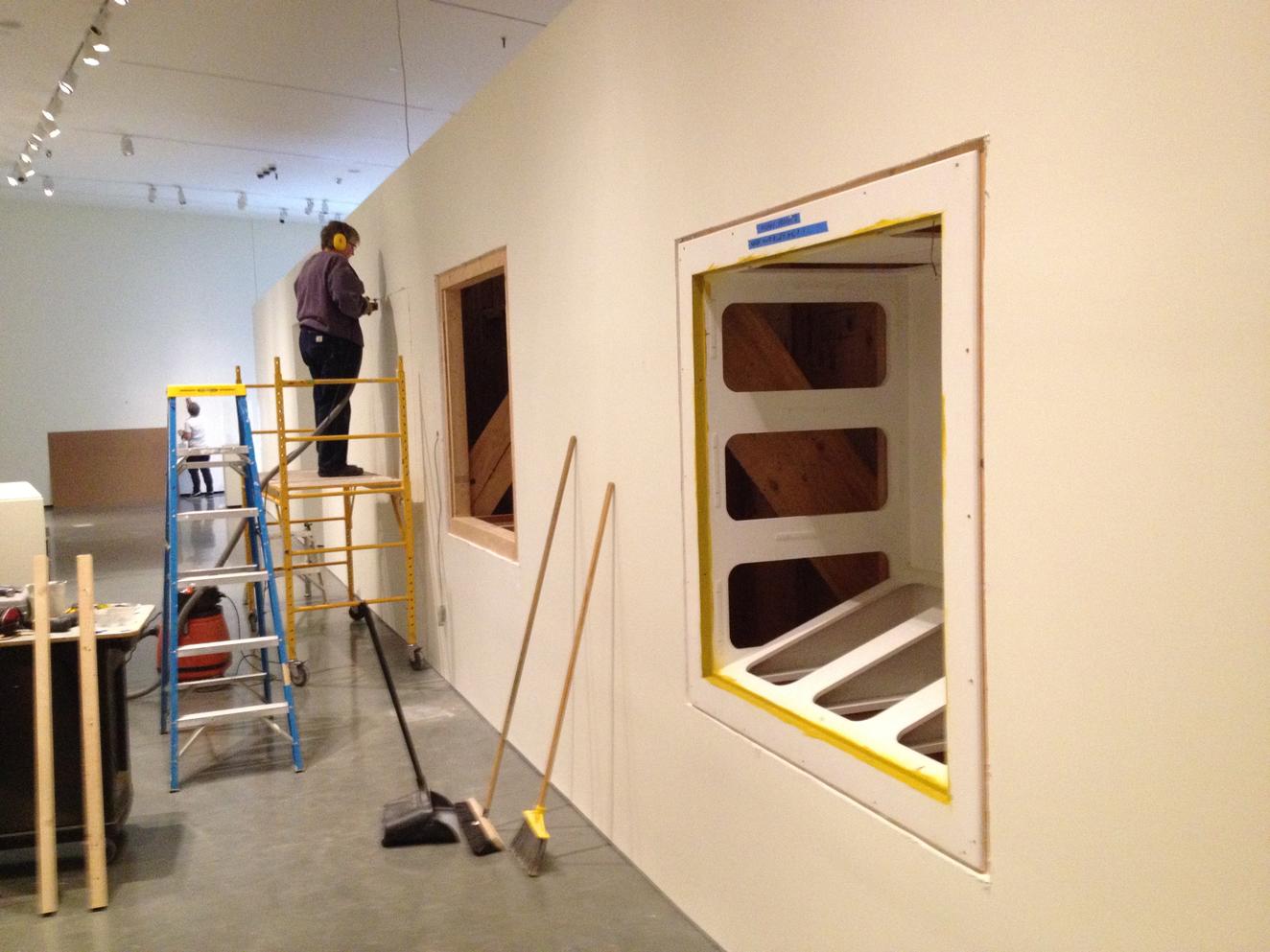Imagine you are at the RISD Museum. You walk into a gallery. The walls are painted a light blue.
It’s cold—museums are famous for it. It’s bright, illuminating the details of the artwork.
You walk to the right, where a line of paintings hang on the wall. They are centuries old, with elaborate, polished frames. Conservators have been working for months to clean them and to refill decayed pigments. The labels, posted next to each frame, tell you that most paintings are from the RISD Museum’s collection, while a select few have been loaned from museums in Boston, Cleveland, Los Angeles, Paris, Cairo, and Beijing.
You take a moment to contemplate how artwork is transported from museum to museum. Custom-made plywood crates, carefully arranged cushioning, robust wrapping…what a feat!
The center of the gallery is a textile maze of sorts. Suspended lines from the ceiling support robes, dresses, and suits levitating above the gallery floor. You observe the prints, the embroidery, and then walk to the cases occupying the opposite side of the gallery. Antique-looking cabinets, each one designed and built specifically for this gallery, house flatware and jewelry. Glass cases contain delicate sculptures. A deity sits atop a pedestal.
You walk toward the door, disappearing into the hallway.
Did you ever stop to think, “what is the carbon footprint of this exhibit?”
I had never considered the question until earlier this summer, when I came across a series of posters in the museum’s collection drawing attention to the climate crisis, and considered the museum’s role in the climate crisis.
The posters depict the problems threatening our planet—melting ice caps, rising sea levels, pollution, and contamination—while also offering solutions like renewable energy sources, green transportation, and encouragement to grow and eat locally. When I asked Jan Howard, curator of prints, drawings, and photographs, about these posters, she told me that they are part of a long history of the RISD Museum collecting art speaking to current events and anxieties.
“During the 1970’s, RISD was a center of poster making in protest of the Vietnam War, so we have a big collection from then that continues to attract public interest. We have acquired projects on the homeless crisis, the Occupy Wall Street protests, and other social issues. Now we’re focusing on local art that was made in response to the murder of George Floyd and Breonna Taylor last summer as well as the COVID pandemic. Artists' responses to the climate emergency will continue to be something we will follow.” Jan says.
The posters fascinated me. They made me wonder what the museum, as an institution dedicated to serving the public, was doing to raise awareness and educate visitors about the climate emergency. They also made me think about how museums can be part of a solution, by changing internal practices to reduce carbon emissions. So during my time as a summer intern, I engaged museum staff, curators, and educators to understand how the museum is thinking about the climate emergency by asking two primary questions. How is the museum changing its own practices in response to the climate emergency? What is the role of the museum in education, activism, and storytelling about our warming planet?
Every exhibition you walk through at the RISD Museum has taken years to develop. The mechanics and practices of how they came to be, however, are invisible to visitors.
An exhibition begins with an idea, articulated in an Exhibition Planning document. The document asks curators to consider their objectives, which objects might feature in the exhibition, who their collaborators will be, and so on. Last year, as the nation reckoned with its racist past and present, museum staff developed an anti-racist action plan guided by internal all-staff dialogues. New sections were added to the Exhibition Planning document, including one addressing the exhibition’s commitment to underrepresented makers and the broader anti-racist strategy of the museum, and another focused on climate and sustainability. This required exhibition planning teams to consider the anticipated carbon footprint of the exhibition and what steps they would take to be more sustainable.
“As an institution, we’ve thought about being anti-racist and engaging in sustainable practices for years even though they were never a part of museum policy. But now, these issues—the two big crises of our time—have become essential parts of project planning and museum practice,” says Marny Kindness, the Exhibitions Manager and Curatorial Administrator. She also heads the museum’s Climate Emergency Sustainability (CES) Task Force, which I joined for the summer. The group brings together ten staff members from departments across the museum to explore ways to reduce the museum’s carbon footprint and to create an eco-policy with best practices for sustainability and climate justice across all areas of the museum’s work. The Digital Initiatives department, for example, is focusing on how to reduce the carbon footprint of the RISD Museum’s website.
“Because the museum provides free, open access to our images, we have some 80,000 images available online. Most people don’t realize this, but websites are stored in actual, physical spaces on servers that require electricity and emit carbon dioxide,” Jeremy Radtke, Assistant Director of Digital Initiatives, tells me.
When you opened this webpage to read this article, 16.14 grams of carbon dioxide were released into the atmosphere. 16.14 grams may not seem like very much, but every month, the RISD Museum website receives approximately 10,000 page views. The numbers add up—every year, the website produces 1,936.56 kilograms of carbon dioxide. That’s the same weight as almost 13 sumo wrestlers, and as much carbon dioxide as boiling water for 262,407 cups of tea. Just this one website emits the same amount of carbon that 89 trees absorb in one year!1 There are ways to reduce website emissions, which Digital Initiatives is looking into, like eco-friendly internet hosting that offsets carbon emissions and uses data centers powered by renewable energy.
Wai Yee Chiong, Assistant Curator of Asian Art, is another member of the task force. She is currently working on an exhibition with other museum curators called Being and Believing in Nature. The exhibition will introduce viewers to diverse cultural beliefs related to the natural world and will invite viewers to reflect on their own personal relationship with nature in a time of climate emergency. However, Wai Yee doesn’t believe that her work as a curator ends with conveying a narrative to viewers. She is advocating for curators to practice the environmental consciousness they are preaching to viewers.
“From packing and unpacking an artwork to its transportation, how much carbon footprint are we producing? What is the cost of storing and caring for the object? When we use an object in an exhibition, how much goes into matting, framing, mounts, and labels? What are the conditions that the work has to be kept in? These are only some of the questions that we ought to be asking,” Wai Yee says, alluding to aspects of exhibition development that extend beyond curatorial responsibilities.
The Conservation Department, for example, works on preventative conservation of objects through temperature and relative humidity controls which currently stand at 68-70 degrees Fahrenheit and 44-55% relative humidity. Conservators at the museum are having conversations about modifying these ranges as climate change brings about more extreme weather, making traditional conservation protocols more expensive and energy-intensive to follow. Conservators at the museum also work on objects in preparation for outgoing loans and museum exhibitions, typically using plastics derived from petroleum products for storage and petroleum-based solvents for treatments. They are currently working to recycle and replace these products with more sustainable options. Similarly, the Preparation & Installation Department, which specializes in short-term packing for loans, long-term packing for storage, and installation of exhibitions, is re-using crates, packaging materials and furniture built for exhibitions.
While behind-the-scenes staff at the museum are making considerable changes to their practice, Kate Irvin, a Curator of the Costume & Textiles department, hopes that these efforts to become more sustainable will be reflected in museum exhibits themselves. “There is so much messiness and experimental thinking involved in curating an exhibition that never makes it into the final product,” Kate says. “If we want to stimulate conversation about sustainability in our exhibits, maybe our displays shouldn’t be so pristine!” Staff across the museum are thinking about the restrictions that museum standards impose on them, and whether they are conducive for engaging with RISD students and the local community. And in light of the climate emergency that threatens our future, there is a resurgent debate at the museum about preserving objects for future generations versus current accessibility for community members to intimately interact with museum objects. “The conservators in my department and I have been discussing how ‘museum standards’ might be redefined,” Kate says. “Should we be more comfortable letting objects live, be enjoyed and interacted with by the community, and then die, or at least follow a more natural course of slowly fading away? Do we really need standards that chase the elusive goal of eternal preservation?”
This debate is especially prescient in the CES Task Force’s discussions about developing an eco-policy for the museum. How should the museum reconcile the conflicting interests of the art, the environment, community accessibility, and preservation for future generations? The task force has been weeding through these questions and hopes to facilitate a wider discussion during an all-staff dialogue scheduled for November.
“Very few museums have eco-policies yet,” Marny says, “We are a small institution that’s very connected to the local community, so if we put our minds to it, I think we can have an eco-policy by the end of the year. We’re hoping that the guidelines speak to ethical, economic, anti-racist, and sustainability concerns for inward-facing practices like building utilities and operations, business partnerships, loans, and acquisitions, and for outward-facing events like exhibitions, digital initiatives, family and school programs, and workshops.”
Rya Jetha was the 2021 Andrew W. Mellon Summer Intern in Asian Art and is a junior at Pomona College studying history and politics.
- 1https://www.websitecarbon.com/website/risdmuseum-org/


